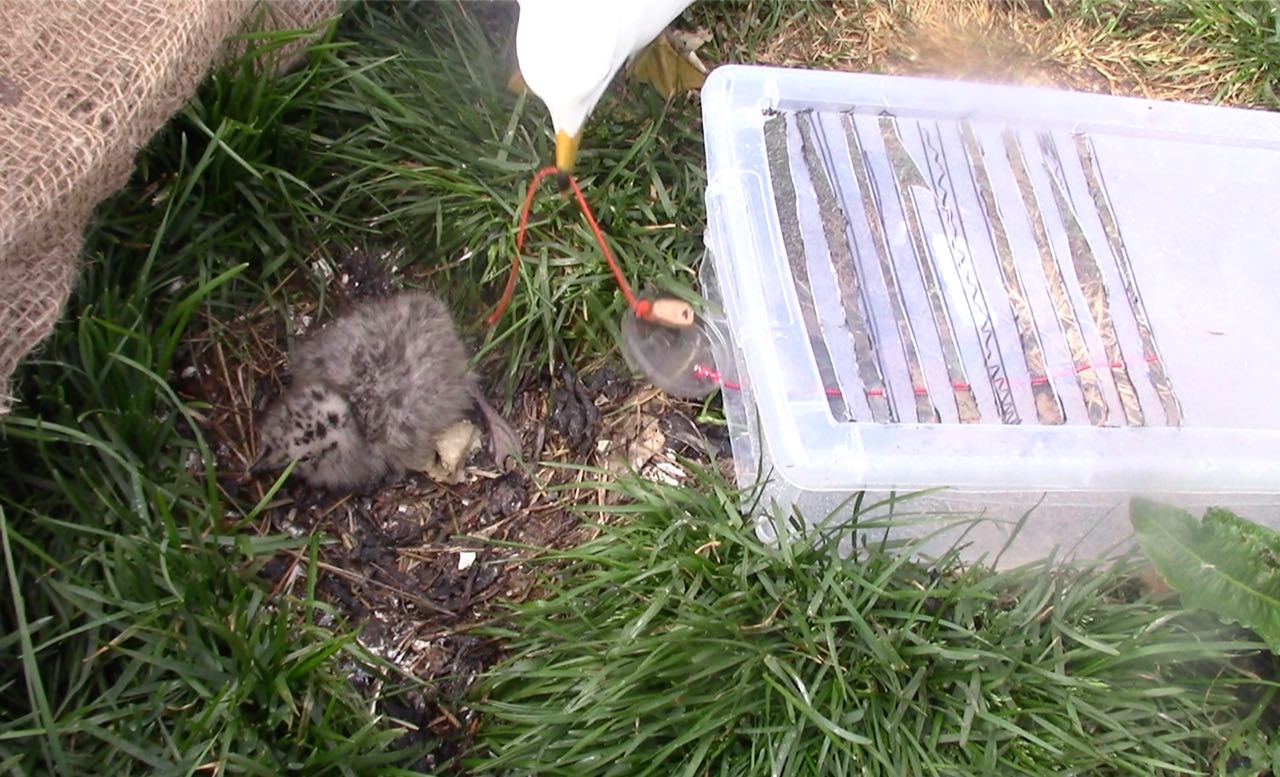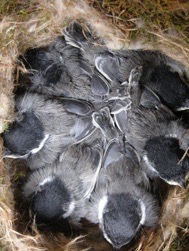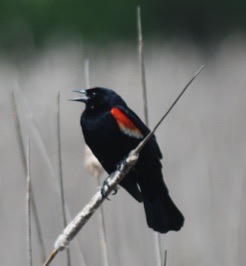Our group conducts research on animal behaviour, with a focus on animal communication. We are interested in understanding how animals use signals to influence others, but also in how various selective pressures, such as predation, sexual selection, and anthropogenic disturbance, have shaped animal signals. Most of our research has focused on birds, though we always consider the most appropriate taxonomic group before beginning new research. This approach has been very rewarding and has allowed us to work with a variety of animal groups, including ground squirrels, tree squirrels, marine invertebrates, and frogs. Below are some of our current research themes.
Effects of diet on avian cognition

Omega-3 fatty acids, such as the ones advertised as supplements in most pharmacies, are critical to cognition in humans and non-human mammals, yet their effects on cognition in other animal groups remains largely unknown. Initiated by PhD candidate Jessika Lamarre, our research combines correlational studies, diet manipulations, and laboratory analyses to test whether omega-3 fatty acids found in fish and other marine organisms improve cognition in birds. Our research has focused on breeding ring-billed gulls but has also expanded to more than a dozen other avian species. Our general approach is to compare a bird's performance on problem-solving tests such as the horizontal string-pull test shown in the photo above to their diet and the amount of omega-3s they consume. Results provide insight into the cognitive consequences of consuming diets that are deficient in omega-3 fatty acids. The research is important because phytoplankton are the main source of omega-3s, yet global warming is altering the biochemistry of phytoplankton and drastically reducing their primary production of omega-3s across the planet.
Evolution of sexually selected signals in birds

Sexual selection is a powerful evolutionary force that has generated many spectacular traits among animals, including specialized weapons, brightly coloured ornaments, and elaborate courtship displays. We use complementary field and aviary studies to investigate how mate choice, intrasexual competition, and social dominance interact to shape reproductive success and secondary sexual characteristics in group-living animals. Our earlier research on this topic focused on polygamous fowl, whereas our current research focuses on black-capped chickadadees.
Information content of animal signals
Vocal signals predict attack: watch a chickadee attack this simulated intruder following a prolongued vocal contest
Many species possess diverse vocal repertoires that are critical for mediating social behaviour. Many animals also vary the fine structure of each type of signal within their repertoire, thereby providing tremendous capacity for encoding information. Using a combination of focal recordings, detailed structural analyses, and playback experiments, our research investigates the kinds of information that animals communicate, and the mechanisms they use to encode it. We have shown that black-capped chickadees communicate individual identity, aggression, and motivational state, that red squirrels communicate identity and kin status, and that fowl and ground squirrels communicate predator attributes, such as size, speed, and proximity.
Effects of anthropogenic disturbance on animal communication

For a species to coexist with humans, it must somehow adapt to the many changes that humans create in its environment. One of the greatest challenges is to be able to communicate in the presence of anthropogenic noise created from roadways and urban development. We have investigated the impacts of anthropogenic noise on the signalling strategies of red-winged blackbirds (Agelaius phoeniceus) and spring peepers (Pseudacris crucifer), two species that commonly reside along noisy roadways. Our research has shown that traffic noise affects the timing of signal production, the number of signals produced, and even the fine structure of individual signals. The changes appear to be adaptations for reducing the masking effects of traffic noise. Our ongoing research is now exploring whether anthropogenic noise and anthropogenic light, which often co-occur, have additive, redundant, or synergistic effects on vocal communication in birds. We are also investigating noise-induced alterations to signals impact signal efficacy and the behaviour of receivers.
Acoustic monitoring as a tool for avian conservation

Building effective conservation strategies requires information about a species’ habitat and microhabitat requirements, yet this basic information is missing for many species. We are using microphone array technology to identify and characterize the critical habitat of landbird species at risk. This exciting new technology is completely passive and can be used to localize vocalizing birds to within approximately 1 m in three-dimensional space. We then return to the exact locations where species-at-risk were detected and characterize the surrounding habitat and microhabitat.